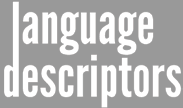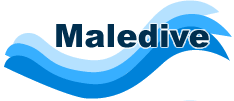Collaborative Community Approach to Migrant Education. A virtual open course for educators
|

|
The resources offer innovative ways to enhance young
migrants’ education by developing links between schools,
the home and local partners in education. This educational
joint venture develops the learners’ skills in the language of
schooling as well as their plurilingual competences.
Available in EN and FR
Go to the publication page |
496
Collaborative Community Approach to Migrant Education. A virtual open course for educators
The resources offer innovative ways to enhance young
migrants’ education by developing links between schools,
the home and local partners in education. This educational
joint venture develops the learners’ skills in the language of
schooling as well as their plurilingual competences.
Available in EN and FR
Go to the publication page
11
//www.ecml.at/Portals/1/images/logos/Logo%20Educo%20migrant.jpg
//www.ecml.at/ECML-Programme/Programme2012-2015/Community/tabid/1836/Default.aspx
7
Language skills for successful subject learning. CEFR-linked descriptors for mathematics and history/civics (Language Descriptors)
|

|
These resources highlight challenges for young learners in subject classes where the language of instruction is not their first language. The focus is on minimum language standards in history/civics and mathematics for learners aged 12/13 and
15/16. The language descriptors are linked to CEFR levels A2, B1 and B2 and available in six languages.
Available in English and French
Go to the publication page
|
497
Language skills for successful subject learning. CEFR-linked descriptors for mathematics and history/civics (Language Descriptors)
These resources highlight challenges for young learners in subject classes where the language of instruction is not their first language. The focus is on minimum language standards in history/civics and mathematics for learners aged 12/13 and
15/16. The language descriptors are linked to CEFR levels A2, B1 and B2 and available in six languages.
Available in English and French
Go to the publication page
10
//www.ecml.at/Portals/1/mtp4/language_descriptors/images/lang-desc-logo.gif
//www.ecml.at/ECML-Programme/Programme2012-2015/LanguageDescriptors/tabid/1800/language/en-GB/Default.aspx
7
Teaching the language of schooling in the context of diversity. Study materials for teacher development
|

|
The study materials focus on teacher education for the
language of schooling (e.g. French in France, Polish in
Poland). They draw on the linguistic and cultural diversity in
the classroom for the benefit of all learners.
Available in English, French and German
Go to the publication page |
499
Teaching the language of schooling in the context of diversity. Study materials for teacher development
The study materials focus on teacher education for the
language of schooling (e.g. French in France, Polish in
Poland). They draw on the linguistic and cultural diversity in
the classroom for the benefit of all learners.
Available in English, French and German
Go to the publication page
9
//www.ecml.at/Portals/1/mtp4/maledive/images/logo-maledive.gif
http://maledive.ecml.at/Home/tabid/3598/language/en-GB/Default.aspx
7
A pluriliteracies approach to teaching for learning
|

|
A pluriliteracies approach builds on CLIL approaches to help
learners become better meaning-makers, who can draw
on content knowledge to communicate successfully across
languages, disciplines and cultures. In this way it promotes
deep learning and helps develop responsible, global citizens.
Available in English and German
Go to the publication page |
495
A pluriliteracies approach to teaching for learning
A pluriliteracies approach builds on CLIL approaches to help
learners become better meaning-makers, who can draw
on content knowledge to communicate successfully across
languages, disciplines and cultures. In this way it promotes
deep learning and helps develop responsible, global citizens.
Available in English and German
Go to the publication page
8
//pluriliteracies.ecml.at/portals/54/logo-pluriliteracies.gif
//pluriliteracies.ecml.at/en-us/
7
MARILLE – Promoting plurilingualism: majority language in multilingual settings
|

|
Traditionally, teachers of majority languages receive less training to teach a language as a second language or to develop the plurilingual repertoire of their learners than, for example, foreign language teachers.Yet, in today’s societies, learners bring many different languages to school.This means that the teaching of themajority language has to extend beyond teaching it as a first language and adopt elements of second language teaching.
Available in English and German.
Go to the publication page
Go to the project page |
55
MARILLE – Promoting plurilingualism: majority language in multilingual settings
Traditionally, teachers of majority languages receive less training to teach a language as a second language or to develop the plurilingual repertoire of their learners than, for example, foreign language teachers.Yet, in today’s societies, learners bring many different languages to school.This means that the teaching of themajority language has to extend beyond teaching it as a first language and adopt elements of second language teaching.
Available in English and German.
Go to the publication page
Go to the project page
3
//www.ecml.at/Portals/1/ECML.Publications.Files/f357c600-ab7c-457a-9363-b2feda52d4bb.jpg
//www.ecml.at/tabid/277/PublicationID/75/Default.aspx
7
A roadmap for schools to support the language(s) of schooling
|

|
The ROADMAP enables schools to set up a tailor-made whole-school strategy to support the development of students’ competences in the language(s) of schooling. The web-based tools help schools to develop the linguistic and critical thinking skills ALL students need in ALL subjects for learning and school success. Go to the publication page |
2408
A roadmap for schools to support the language(s) of schooling
The ROADMAP enables schools to set up a tailor-made whole-school strategy to support the development of students’ competences in the language(s) of schooling. The web-based tools help schools to develop the linguistic and critical thinking skills ALL students need in ALL subjects for learning and school success.
Go to the publication page
0
/Portals/1/images/logos/logo-roadmap.gif
7